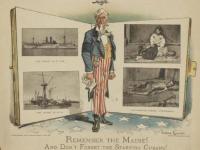Answer: The Citizens’ Permanent Relief Committee
Founded in Philadelphia during the 1880s, the Citizens’ Permanent Relief Committee was formed by businessmen and philanthropists interested in relief work. The committee was supported not only by its founders but also by prominent members among the Philadelphia wealthy.
One of the citizens involved with the committee, John H. Converse, lead efforts to link the work done by the Pennsylvania Sanitary Commission with that of the committee; chief among the goals in doing this was the development of a system to give medical aid to military personnel. The efforts were notorious during the Spanish American War, when the committee (using the more comprehensive National Relief Commission as their name) provided aid to soldiers in the form of hospital trains, stationed near military camps, and the procurement of medicines and supplies for soldiers from Pennsylvania and other states.
Between 1893-1895 the committee provided help to the unemployed in many Philadelphia wards; and during the Johnstown Flood of 1889, the Citizens’ Permanent Relief Committee was called by Daniel Hastings, governor of Pennsylvania, to spearhead the relief efforts to the area, a task complicated by typhoid fever breaks among the victims.
The Citizens’ Permanent Relief Committee also helped outside the continental U.S. The committee was involved in relief efforts during the Russian famine of 1892-1893, and the Armenian massacres of 1896. The committee also provided help to American soldiers in Cuba and Puerto Rico during the American occupation. Efforts were also made to provide monetary aid as well as good and supplies to the families of Pennsylvania soldiers active in the Spanish-American War.
HSP has records from the Citizens' Permanent Relief Committee (#1421) that consist of correspondence, business papers, magazines, clippings, applications for relief, treasurer's reports, minutes, investigations, and field reports related to each disaster for which the committee provided relief.

